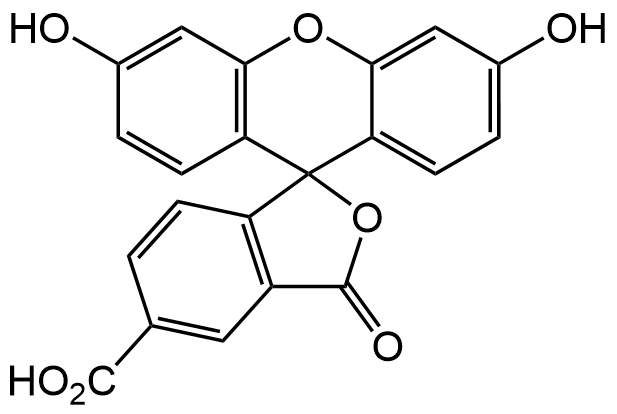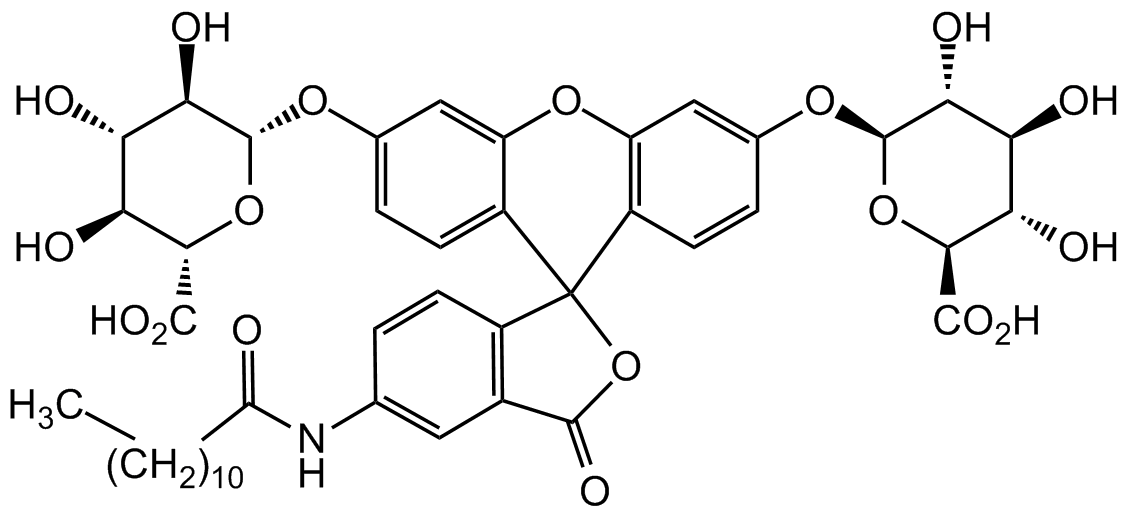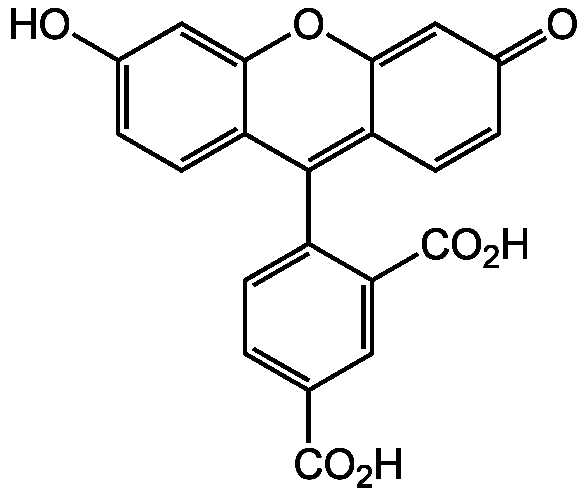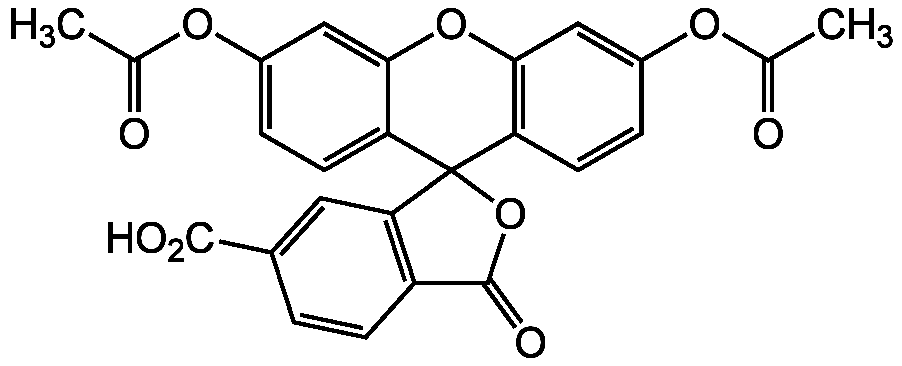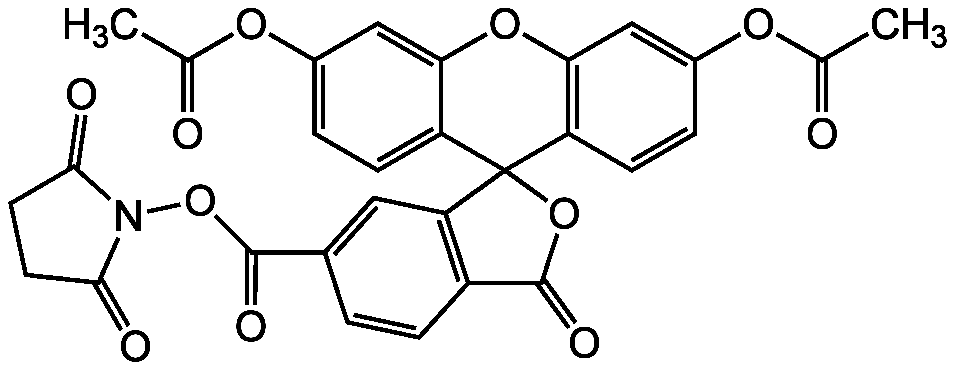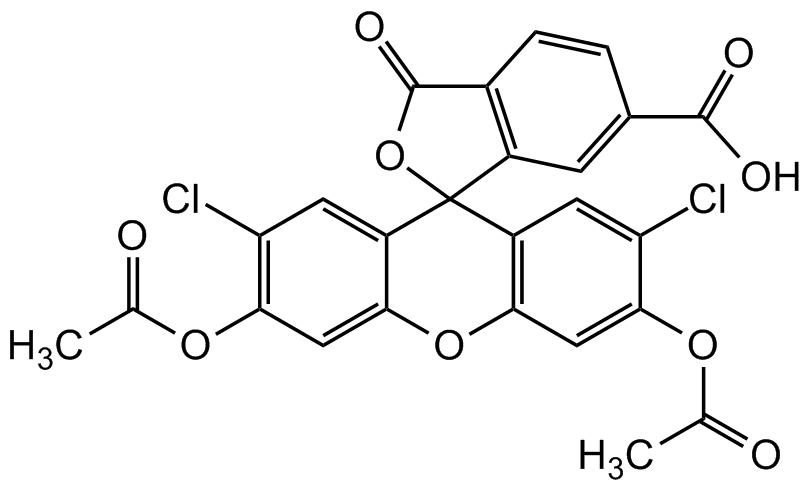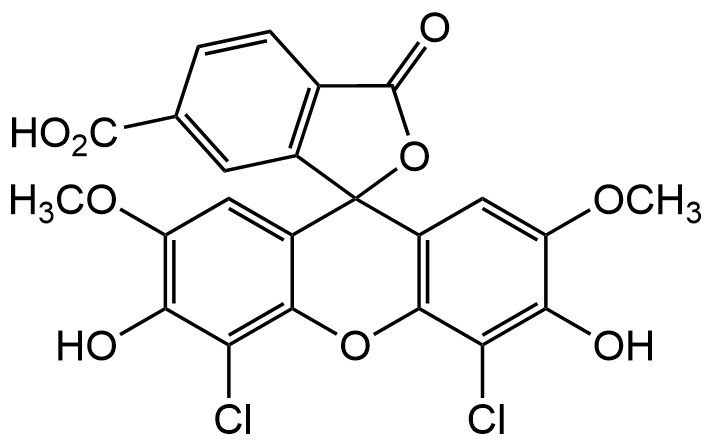
Chemical Structure
6-Carboxy-4,5-dichloro-2,7-dimethoxy fluorescein
CDX-C0687
Estimated Purity>97%
Product group Chemicals
Overview
- SupplierChemodex
- Product Name6-Carboxy-4,5-dichloro-2,7-dimethoxy fluorescein
- Delivery Days Customer10
- CertificationResearch Use Only
- Estimated Purity>97%
- Scientific DescriptionChemical. CAS: 82855-40-1. Formula: C23H14Cl2O9. MW: 505.26. JOE is a conventional fluorophore predominantly used in automated DNA sequencing. Characterized by an intermediate-wavelength spectra, high quantum yield, and low pH sensitivity in the physiological range. Has a similar absorption and emission spectra to those of rhodamine 6G. Spectral Data: lambdaex 520nm, lambdaem550 nm in Buffer pH 12; lambdaex 520nm, lambdaem 548nm in DMSO. JOE possesses an absorbance (~520 nm) and emission (~550 nm) red-shifted compared to those of carboxyfluorescein (FAM). The substantial difference in emission wavelengths of FAM and JOE makes them spectrally resolvable and allows simultaneous use of both dyes in multiplex assays. JOE had been applied as a fluorescent label in DNA sequencing, PCR, and LCR amplifications. It is a common fluorophore used in various formats of DNA sequencing based on the laser excitation of electrophoretically separated labeled DNA fragments, e.g. two dyes (FAM and JOE) labeled primers, four dyes (FAM, JOE, TAMRA, ROX) labeled primers, energy transfer primers, and dye-labeled terminator techniques. Oligonucleotides labeled with JOE found applications in an assay functionally equivalent to Southern blotting, short tandem repeat (STR), and single strand conformational polymorphism (SSCP) techniques. Many real-time PCR platforms have spectral channels suitable for JOE, and it is a common reporter dye in TaqMan probes, PNA molecular beacons, self-quenched probes LUX, and HyBeacons. Other applications of JOE in nucleic acid technology are fluorescent detection of mRNA, DNA arrays and solid phase minisequencing, multiple SNP genotyping, methylation assay, detection of DNA-binding proteins and ribosome-mRNA complexes, and attaching of JOE-modified oligonucleotides to gold nanoparticles. - JOE is a conventional fluorophore predominantly used in automated DNA sequencing. Characterized by an intermediate-wavelength spectra, high quantum yield, and low pH sensitivity in the physiological range. Has a similar absorption and emission spectra to those of rhodamine 6G. Spectral Data: lambdaex 520nm, lambdaem550 nm in Buffer pH 12; lambdaex 520nm, lambdaem 548nm in DMSO. JOE possesses an absorbance (~520 nm) and emission (~550 nm) red-shifted compared to those of carboxyfluorescein (FAM). The substantial difference in emission wavelengths of FAM and JOE makes them spectrally resolvable and allows simultaneous use of both dyes in multiplex assays. JOE had been applied as a fluorescent label in DNA sequencing, PCR, and LCR amplifications. It is a common fluorophore used in various formats of DNA sequencing based on the laser excitation of electrophoretically separated labeled DNA fragments, e.g. two dyes (FAM and JOE) labeled primers, four dyes (FAM, JOE, TAMRA, ROX) labeled primers, energy transfer primers, and dye-labeled terminator techniques. Oligonucleotides labeled with JOE found applications in an assay functionally equivalent to Southern blotting, short tandem repeat (STR), and single strand conformational polymorphism (SSCP) techniques. Many real-time PCR platforms have spectral channels suitable for JOE, and it is a common reporter dye in TaqMan probes, PNA molecular beacons, self-quenched probes LUX, and HyBeacons. Other applications of JOE in nucleic acid technology are fluorescent detection of mRNA, DNA arrays and solid phase minisequencing, multiple SNP genotyping, methylation assay, detection of DNA-binding proteins and ribosome-mRNA complexes, and attaching of JOE-modified oligonucleotides to gold nanoparticles.
- Storage Instruction2°C to 8°C,RT
- UNSPSC41116134

